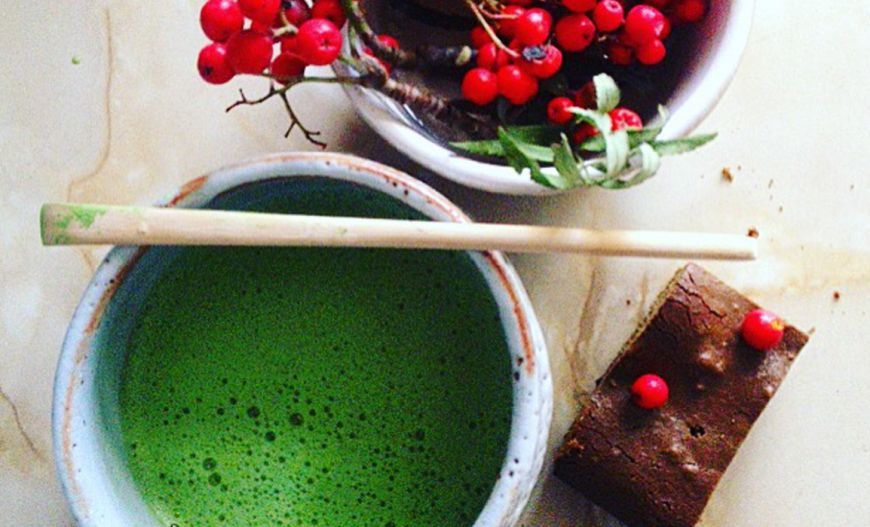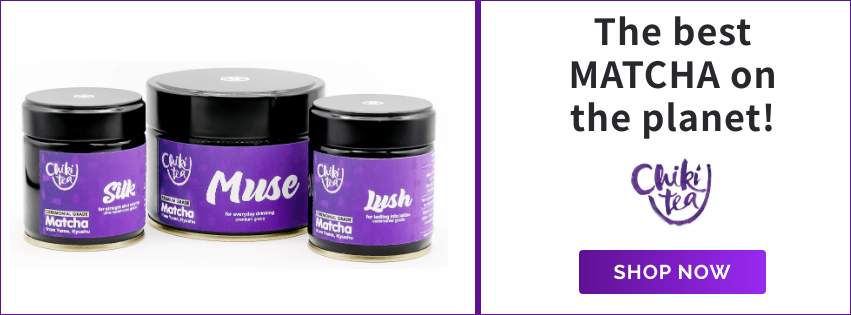The five myths about matcha and why it's misunderstood
- Holly Helt

Matcha is often misunderstood if people aren’t familiar with it. I was recently hanging out in Austin, Texas -- the health capital of the state -- and talking tea with the locals. While a lot of folks in Texas have heard of matcha, more often than not I was repeatedly confronted with five misconceptions on the brilliant jade green elixir. Let’s set the record straight!
Myth One: All Matcha Tastes Bitter
While matcha can certainly be bitter -- and I’ve had some that would grow hair on your chest -- there is sweet and smooth matcha out there if you know where to look. Oftentimes the bitter matcha is experienced in the tea ceremony and is due to either the ratio of tea to water or the quality of matcha used: Especially when done in a tourist setting in Japan. The Japanese can tolerate a much stronger matcha taste than foreigners, so we need to adjust the flavor to suit our palate. The perfect way to ensure a sweet cup of matcha is to purchase a higher grade of it, and this is usually driven by price. To find your taste threshold, make the matcha starting with 1 gram to 75-100 ml of water, then increase the matcha each time until you reach your perfect taste. The Chiki Tea bold shot is made with 3 grams of matcha from the Yame region and whisked with 75 ml of water that is no hotter than 80°C or 176°F.
Myth Two: Matcha Has Too Much Caffeine
Yes, matcha has caffeine, but where the confusion lies is in how the body reacts to it. I have written about the caffeine issue so check that out for detailed information. The abundance of polyphenols and all the goodness in matcha slows the release of caffeine into your bloodstream as it is metabolized. This means you feel energized but not jittery and you remain calmly alert for longer, therefore not needing another hit to keep you going. Coffee, on the other hand, has the sharp hit and then crash so you always feel the need to reach for another cup to give you energy.
Myth Three: Matcha is Expensive
Matcha is packed with nutrients, and drinking it can detox the body and protect it from free radicals that pollute your body. Matcha is more than just a drink: It’s a health boost. As far as most Japanese are concerned — and me too — the more you pay for your matcha, the smoother the texture and the better it will taste. As for spending more to get more nutrients, that is somewhat true but hard to prove since there hasn’t been much research on it. Matcha grades are what determine the price. There are three general grades that you can find on the general market and multiple blends/price points within each category: Ceremonial grade, premium grade, and culinary grade. You really need to taste the various grades to see which you like best. You can certainly find a matcha to fit your price point and palate. It’s a bit like wine… You can savor a vintage Bordeaux or gulp wine from a box.
Myth Four: Matcha is Hard to Make
Sure it’s ideal to have the right equipment but you don’t need a matcha preparation bowl and bamboo whisk to make a tasty cup of matcha. As long as you know the basic principle of getting the matcha powder to suspend in water, this can be done in a few different ways; including putting it in a lidded jar and shaking it like crazy! I’ve known people to make it in a blender as well as in a Nespresso Aeroccino. Starbucks adds milk and steams it to make their matcha latte… Though their matcha is a sweetened blended drink mix and not the matcha we are talking about. Without using a bamboo whisk, the froth won’t be as good; but if you are more interested in getting the taste and nutrients down your gullet, this is fine. However, if you want to use the making of matcha as a pause in your day: Go for the matcha preparation bowl and bamboo whisk. You will taste the subtle difference as your mind will be clear.
Myth Five: All Matcha is for Drinking or Cooking
There is no harm in drinking or cooking with any grade of matcha. However, your results won’t stack up! Ceremonial-grade matcha is made with the very finest leaves and produces the most flavors within a sip. If you add milk, or eggs and flour, you will completely cover up the subtle and multiple flavor profiles. Culinary-grade matcha, on the other hand, is designed with a stronger flavor to stand up to other ingredients in your recipes. Think culinary in the kitchen and ceremonial for a sip.

About Holly Helt
Holly is American and grew up in Japan drinking Japanese tea from age-three. She has studied two methods of tea ceremony, Urasenke and the lesser-known Yabunouchi, which has a direct lineage to Sen-no Rikyu (known as the father of the tea ceremony) ; it's also the school of practice for samurai. In 2012 she founded Chiki Tea - an online retailer of Japanese green teas, all sourced directly from small farms in Japan. Splitting her time between Japan and her home in Texas, Holly strives to bring the best teas from Japan to as many people as she can find to share in her life's passion.

